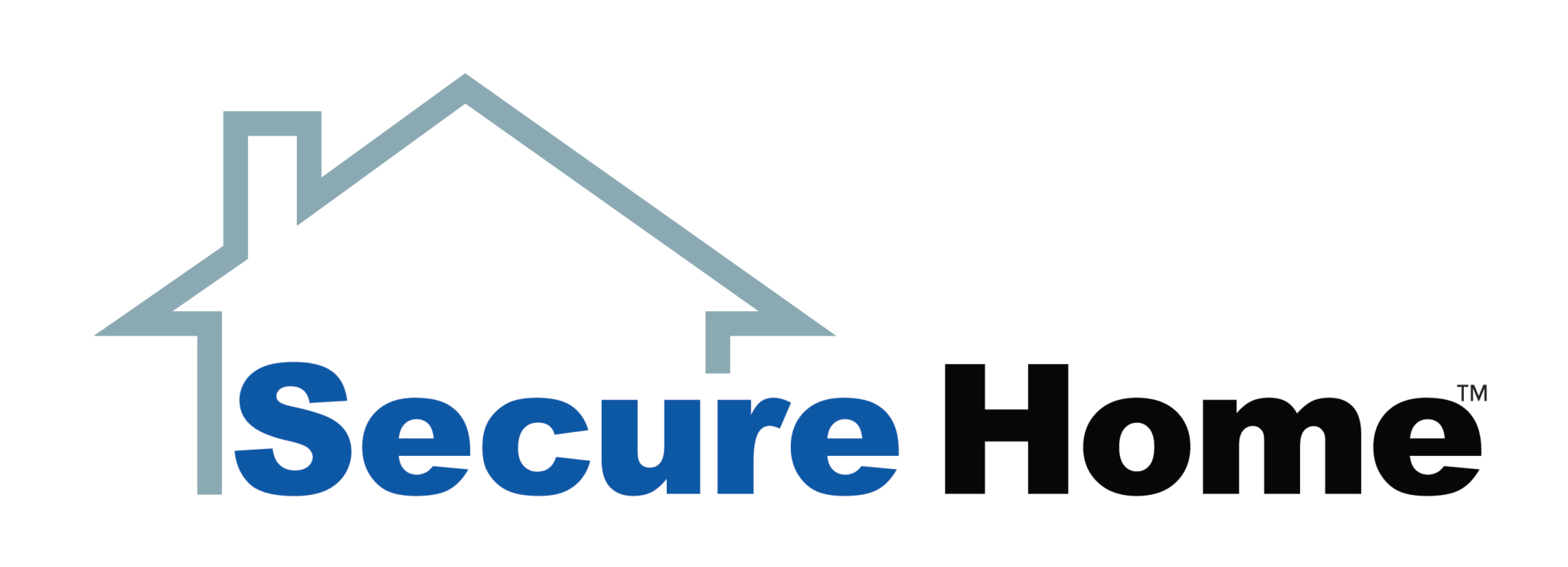When purchasing a lockset or deadbolt for your home, it’s important to understand the differences between the various types or functions. Always be sure to look at the manufacturer’s instructions when installing your bored lock or deadbolt.
Locksets & Deadbolts Types
Locksets & Deadbolts 101
The Importance of a Properly Fitted Lockset
It is essential to match your lock set to your door. Not only for security purposes, but the practical use of your door will be affected if it doesn’t fit properly. Everything from the thickness of the door to the hardware on both sides needs to be exact.
Beyond functionality, having a properly fitted lockset ensures:
-
Your home stays draft free during cooler seasons, and you do not lose energy in hotter ones.
-
Your door is structurally sound, and the deadbolt can stay intact should an intruder be attempting access.
-
Pests do not enter your home and are kept under control.
-
Unwanted moisture does not enter your home – causing aesthetic damage or damage to the interior side of your lockset.
How to Measure Your Door for a New Lockset
Before shopping around, it’s important to have the measurements of your door on hand. Take the following steps to measure your door properly:
-
Measure the inside and outside of your door completely; this includes the thickness and width of the door.
-
Measure the backset, or the distance between the edge of the door and the center where the latch and deadbolt fit.
-
Measure the width of the strike plate.
-
Use these measurements to properly select a lockset.
Tip: During Installation, when aligning your strike plate and deadbolt, rub lipstick onto the deadbolt, turn the knob to retract the latch and close the door. Then release the knob just enough for the latch to lightly touch the jamb. The color left over will show you exactly where you will reach alignment.
Maintaining Your Lockset
Maintaining your lockset is an important step that ensures it keeps you secure, stays durable, and is functional all year round. Here’s how to properly maintain your lockset:
-
Test your lockset: Check that your lockset is opening and closing properly. Make sure nothing feels loose and that the strike plate and latch are aligned. If you notice it is getting stuck a simple fix like cleaning your lockset can fix this. If you notice your door isn’t latching, it likely means the door latch and the strike plate are out of alignment. To fix, simply tighten the door hinge screws and then, if need be, adjust the strike plate by loosening the screws and shifting it to the right position.
-
Clean it periodically: Use a mild detergent and a damp rag to clean your lockset – include the handle, the rosette, the strike, the mounting trim, and the deadbolt itself. This prevents a buildup of dirt or grime that will cause the lock to seize up or stick. Avoid any harsh chemicals or petroleum-based products while doing this as it can cause more damage to the lock instead.
-
Lubricate your lockset: Since locks get filled with dirt and grime after extensive use, they often stick or don’t work as smoothly. By using a graphite lubricant, or any other dry lubricant, you avoid this buildup, and your lockset will work better. To lubricate your lockset, simply spray a small amount of your lubricant of choice into the keyhole. Then, take your key and insert it in and out repeatedly while wiping any left-over remnants from the key every time.
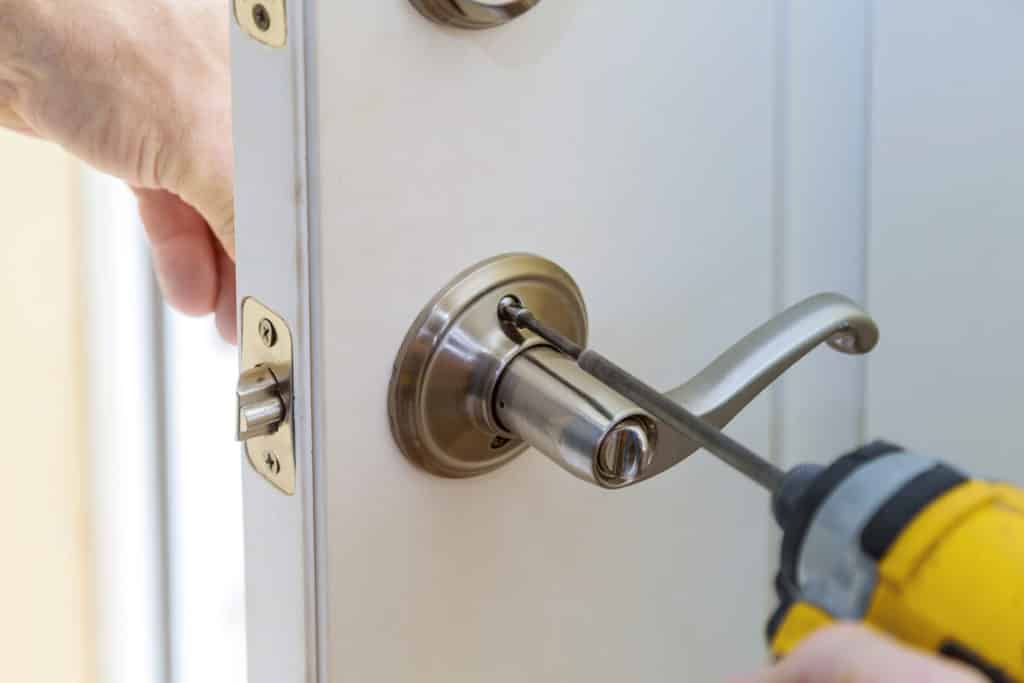
Before You Shop
Know what type of lock you are looking for.
Know your door. How thick is the door? How far is the edge of the door, to the center of where the lock will go (backset)? Knowing these dimensions will help you choose a lockset or deadbolt that will fit your door best. Most BHMA® products will be adjustable to the most common door preparations.
Know the ‘handing’ of your door. When you go to open the door toward you, is the knob or handle on your right side, or on your left? If the handle is closer to your left hand, it then the door is LEFT-HANDED. The opposite goes for a RIGHT-HANDED door. Make sure you know what type of door you have, to ensure that you are purchasing the appropriate kind of lockset or deadbolt.
Are you looking to buy a product for an interior or exterior door?
How much security do you need?
Will the door be used frequently?
Will the protective aesthetic finish be exposed to the elements?
What color finish are you looking for?
Is the lock in a visible location where the look is important?
Will it need to match your existing hardware?
What is a Lockset?
A lockset is a common door locking / latching assembly that is installed in a round bored opening at the edge of a door.
Entry Locksets
Entry locksets are usually used for exterior doors and are lockable by a key or thumb turn. They require a key, push pad or other credential to gain entry from the outside. There are several variations of entry locks, depending on your specific need.
Interior Locksets
When it comes to installing locks within your home, there are two common types:
Privacy Locksets – These are typically used on bathroom and bedroom doors. They are capable of being unlocked from the outside with a simple pin-like tool and are locked from the inside using a turn or push button.
Passage Locksets – These ‘locks’ don’t actually lock! They are generally used on closet or pantry doors, where privacy is not required. Instead, they simply latch to keep the door closed.
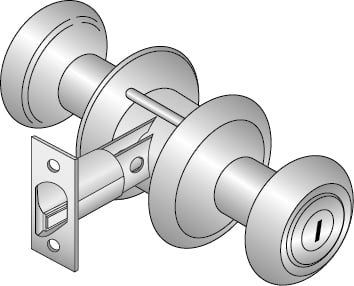
Locksets are also available in other, more specialized versions, depending on your specific needs.
What is a Deadbolt?
A deadbolt is a type of lockset that typically used on exterior doors. Also known as auxiliary locks—because they are usually used in addition to a lockset— deadbolts can be an important security feature for your home. Unlike locksets, deadbolts must be operated by a key and/or thumb turn.
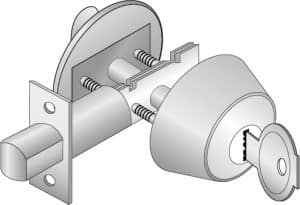
Bored Deadbolts – These are the most common type of deadbolt. They are made to fit into a round opening on the face of the door, and the bolt must be operated with a key or thumb turn.
Bored Dead Latches – These have a beveled latch that will retract and project into the door frame upon the closing of the door.
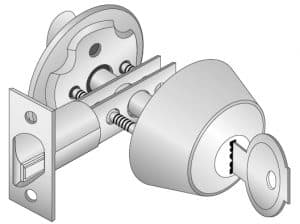
Deadbolt Thumb Turn Lock
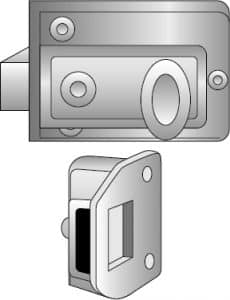
Deadbolt Keyhole
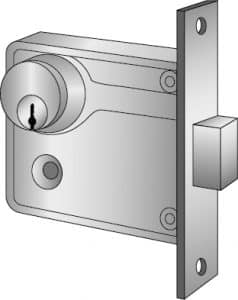
Other types of deadbolts are less common but available for certain applications; there are deadbolts that fit into the edge of the door (mortise), onto the door surface (rim).
Single Cylinder Deadbolt: Single-cylinder deadbolts have a keyhole on the exterior side and a thumb turn lock on the interior side. Since it does not require you to use a key from the inside, this type of deadbolt allows you to exit your home quickly in the case of an emergency.
Double-Cylinder Deadbolt: A double-cylinder deadbolt has a keyhole on both the exterior and interior side of the deadbolt for extra security. While this makes it more difficult for intruders to get in—if you have a glass door, for example—it can also make it more difficult to exit your home in the event of an emergency.
